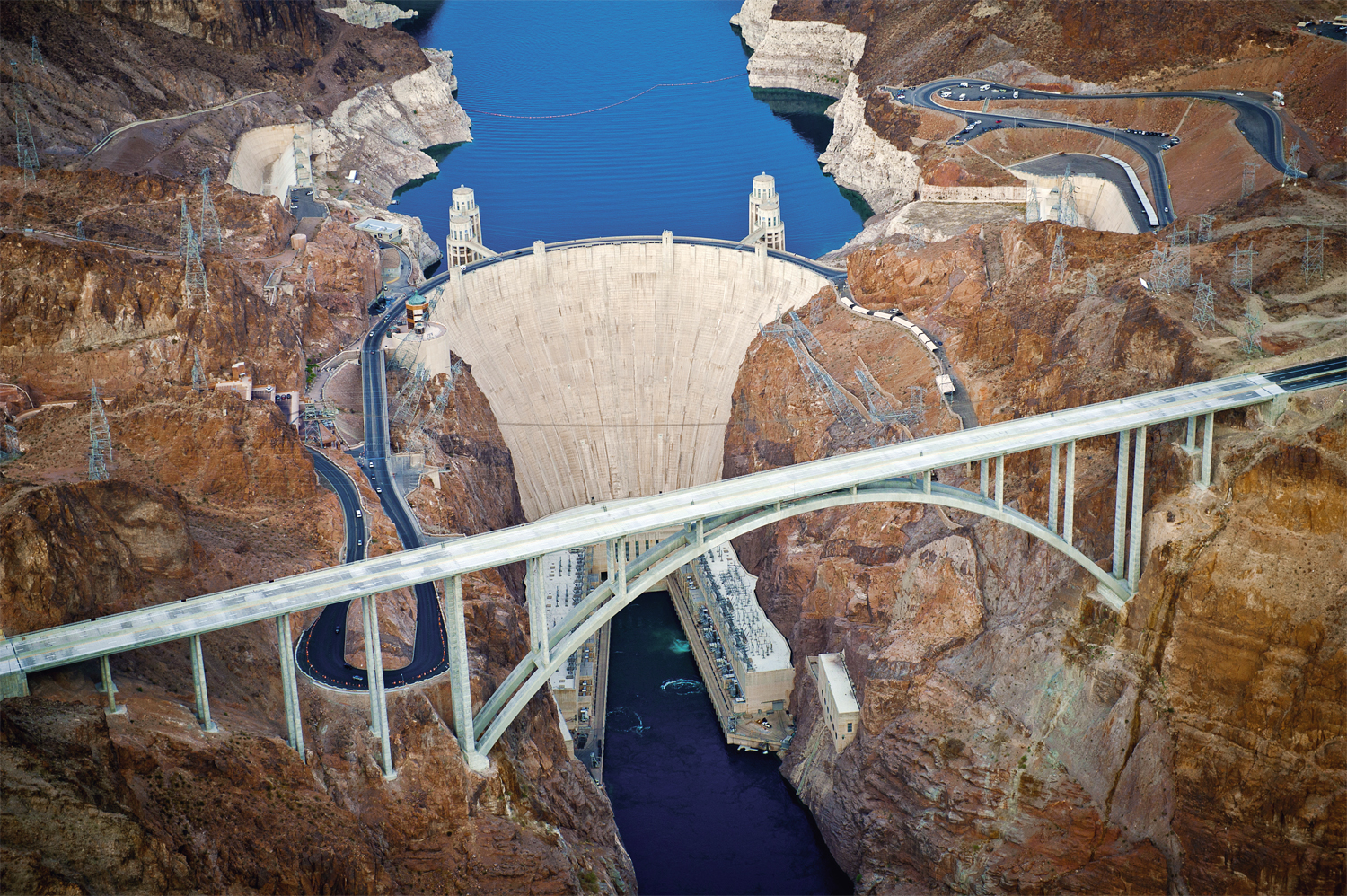Mass concrete

|
[edit] Introduction
The generally accepted and widely-used definition of ‘mass concrete’ is that provided by the American Concrete Institute (ACI). It defines mass concrete as:
“…any volume of structural concrete in which a combination of dimensions of the member being cast, the boundary conditions, the characteristics of the concrete mixture, and the ambient conditions [which] can lead to undesirable thermal stresses, cracking, deleterious chemical reactions, or reduction in the long-term strength as a result of elevated concrete temperature due to heat of hydration.”
The emphasis on thermal behaviour – which can cause a loss of structural integrity and monolithic action – is the only characteristic that distinguishes mass concrete from other concrete work.
Mass concrete is usually associated with large, poured in-situ concrete structures such as dams, bridge piers, foundations to very tall buildings and other large volume placements which are at least 1m-deep. In many cases, mass concrete is unreinforced and therefore strong in compression but weak in tension.
[edit] Hoover Dam
Construction of the Hoover Dam (pictured) on the Colorado River, USA, began in 1931, required enormous quantities of mass concrete (3.3 million cubic metres) to construct its arch-gravity structure. It is 13.7m wide at the top and 201m-wide at the bottom. To dissipate the heat generated by the cooling (setting) of the mass concrete required a vast network of water circulating through steel pipes. Without this, the concrete would still be setting today.
[edit] Related articles on Designing Buildings Wiki
- Admixtures in concrete.
- Cast-in-place concrete.
- Cement mortar.
- Compression.
- Compressive strength.
- Concrete-steel composite structures.
- Concreting plant.
- Laitance.
- Portland cement.
- Precast concrete.
- Prestressed concrete.
- Power float.
- Reinforced concrete.
- Self-compacting concrete.
- Smart concrete.
- Testing concrete.
- The properties of concrete.
- Types of concrete.
Featured articles and news
CIOB and CORBON combine forces
To elevate professional standards in Nigeria’s construction industry.
Amendment to the GB Energy Bill welcomed by ECA
Move prevents nationally-owned energy company from investing in solar panels produced by modern slavery.
Gregor Harvie argues that AI is state-sanctioned theft of IP.
Heat pumps, vehicle chargers and heating appliances must be sold with smart functionality.
Experimental AI housing target help for councils
Experimental AI could help councils meet housing targets by digitising records.
New-style degrees set for reformed ARB accreditation
Following the ARB Tomorrow's Architects competency outcomes for Architects.
BSRIA Occupant Wellbeing survey BOW
Occupant satisfaction and wellbeing tool inc. physical environment, indoor facilities, functionality and accessibility.
Preserving, waterproofing and decorating buildings.
Many resources for visitors aswell as new features for members.
Using technology to empower communities
The Community data platform; capturing the DNA of a place and fostering participation, for better design.
Heat pump and wind turbine sound calculations for PDRs
MCS publish updated sound calculation standards for permitted development installations.
Homes England creates largest housing-led site in the North
Successful, 34 hectare land acquisition with the residential allocation now completed.
Scottish apprenticeship training proposals
General support although better accountability and transparency is sought.
The history of building regulations
A story of belated action in response to crisis.
Moisture, fire safety and emerging trends in living walls
How wet is your wall?
Current policy explained and newly published consultation by the UK and Welsh Governments.
British architecture 1919–39. Book review.
Conservation of listed prefabs in Moseley.
Energy industry calls for urgent reform.

























